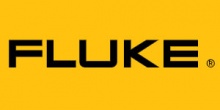Virtual simulation accelerates Volkswagen ID.R development

The Volkswagen Motorsport team continues to develop the ID.R ready for its next challenge. In summer, the team will attempt to achieve the record for electric vehicles on the Nürburgring Nordschleife.
As well as test drives and work in the wind tunnel, Volkswagen Motorsport has relied heavily on computer simulations in the preparation phase. These digital tools not only provide essential support, but they also save time and costs.
“While Romain Dumas practices on the track or tests various chassis setups on the driving simulator, simulation technology also plays a crucial role for the engineers too,” explained Dr Benjamin Ahrenholz, head of calculation/simulation at Volkswagen Motorsport.
“With regard to the Nürburgring Nordschleife, we are in the fortunate position of being in possession of a wealth of data on the track layout and road surface. This has enabled us to adapt the ID.R virtually, as efficiently as possible, despite the fact it has never been driven on a lap of the Nordschleife before.”
Whatever Dumas inputs into the virtual cockpit, the computer then builds on in the off-line driving dynamics simulation, whereby it completes, theoretically, an infinite number of laps with a saved profile. The simulation can determine how different power outputs of the motors or shifts in the vehicle’s center of gravity affect the lap time. This enabled the team to refine the handling of the car and the responsiveness of the motors.
Engineers also used CFD to study how the airflow is channelled around the ID.R and through the cooling systems. Battery simulation has been used to compare power management and recuperation strategies to ensure the most efficient use of the electrical energy.
Simulation was also used for the mechanical design of the components. Structural simulation was used to calculate the loads on the chassis, suspension and bodywork of the ID.R. For a production vehicle, the durability and construction are mostly the focus, whereas the priorities for the ID.R are stability and vehicle weight.
Parts such as cable fixtures and aerodynamic elements have conventionally been time consuming and costly to make. The Volkswagen Motorsport team used 3D printing to create components. Ahrenholz said, “When it’s required, we manufacture these components as individual pieces made of special plastics by 3D printers. This is usually applicable for relatively small parts that are not exposed to high mechanical loads.”
 广告
广告 编辑推荐
最新资讯
-
宝马南京信息技术中心正式运营,构建亚洲最
2025-10-29 09:42
-
一汽车项目落户湖北,总投资6.5亿元
2025-10-29 09:41
-
比亚迪台州超级电池工厂全面投产!
2025-10-28 10:51
-
E-NCAP2026对撞后安全的要求V1.0(中)
2025-10-28 09:27
-
美国自动驾驶ADS车辆碰撞事故分析
2025-10-28 09:24





 广告
广告


























































